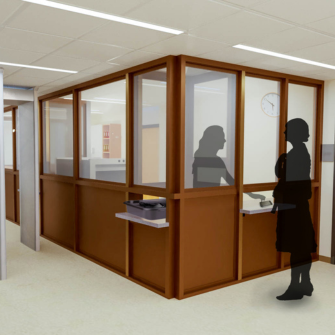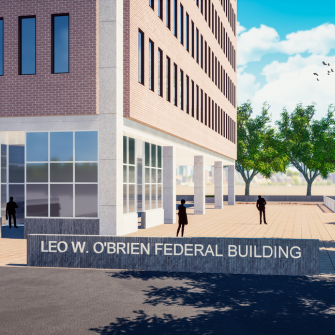Designing In The Public Realm - Part 2 Updates
Authored by Chris Resig, AIA, LEED AP, DHT, CFDAI, SCUP
This is the second installment in a series exploring many factors considered for projects designed for the public sector. In NKB’s 40+ years of designing buildings and other structures serving the public sector, we have found the following factors to be the top ten project drivers in developing projects designed for governmental clients.
The following project driver exploration will focus on facilities within the federal government portfolio, as the federal government is the largest contributor of buildings and other facilities ‘in the public realm’.
The federal government building and facility portfolio comprises a broad range of facilities serving a widely divergent set of needs. In general, the portfolio consists of facilities owned or leased by the General Services Administration, Department of Veterans Affairs, Department of Defense, and other departments or agencies. The list is so extensive that it can barely be quantified.
For purposes of this discussion, we will focus on the facilities either owned or leased by the General Services Administration (GSA) as it serves as the largest ‘landlord of the federal government.’ To provide a little perspective, the GSA owns or leases over 376,900,000 SF of space in 9,600 buildings in more than 2,200 communities nationwide (8,100 leased facilities and 1,500 owned facilities). In addition to office/administration buildings, GSA properties include land ports of entry, courthouses, laboratories, post offices, data processing centers, and more.
1. Responsibility
Projects designed and constructed in the public realm must create enduring value while providing good stewardship of the resources required to implement the project scope. As mentioned previously, the federal portfolio is diverse, and it serves a wide range of needs. To support enduring value, federal facilities are intended to remain in service for extended periods of time. According to the Association of General Contractors, the average age of federal facilities is approximately 49 years. The oldest building currently in service for active governmental use is the McEwen Customs House in Ogdensburg, NY, originally constructed between 1806 and 1809, which interestingly enough, weathered cannon fire during the War of 1812. Now there is a durable building.
Correspondingly, governmental projects fall into the unique position of not only providing health, safety, and welfare for the employees and the public that uses the space. In many cases, the department or agency utilizing the space provides critical health, safety, and welfare services for the public-at-large, well 'beyond the walls' of the project. The federal government consists of 457 agencies that serve an immense set of public needs. Agencies include the Department of Defense, Justice Department, Department of Homeland Security, Department of Veterans Affairs, Department of Health & Human Services, Food & Drug Administration, Centers for Disease Control, Department of Labor, Department of Energy, Consumer Financial Protection Bureau, and the Environmental Protection Agency to name a few.
In many cases, the services these government departments or agencies provide a large cross-section of the very fabric of society itself. In short, the federal portfolio not only provides the space for the various departments or agencies to function, but they become the ‘command center’ from which public health, safety, and welfare is protected.
2. Respecting Context & History
By their very nature, federal government facilities are direct extensions of the communities and regions in which they reside. They provide both a physical and societal presence within the more than 2,200 communities in which they exist across the United States and its Territories. One does not exist without the other. The government exists because there are communities to govern. Communities exist because there is a social framework that the government provides to the community.
Based on this interdependence of context, history, and social fabric, governmental facilities are extensions of the local, regional, and national historical narrative. Specifically, they must reflect the "dignity, enterprise, vigor, and stability" of the United States government. The sheer physical presence and stability of that facility's edifice provide an outward manifestation of the institution it represents.
While this holds true, federal facilities do not exist in a vacuum. They are woven into the fabric of communities throughout the country and the history of these communities. A tremendous historical narrative has been told from the backdrop of the structures in which they occurred. What comes to mind when you hear Independence Hall, Old State House Boston, United States Capitol, the White House, Alexander Hamilton Custom House, New York City Hall, St. Lawrence Seaway, Hoover Dam, or the National Park system? The stability of these governmental facilities and the history they have lived offers form and meaning to the fabric of the culture we live in - and as designers, it is our job to protect that.






![GSA_BINGHAMTON_VARRIOUS [c] LIBRARY OF CONGRESS (Large) (2)_SS.png](https://images.squarespace-cdn.com/content/v1/661c57f53ea9b50b7c7d45e5/1726082511491-CN0944DSBET5K3QU7MVI/GSA_BINGHAMTON_VARRIOUS+%5Bc%5D+LIBRARY+OF+CONGRESS+%28Large%29+%282%29_SS.png)

